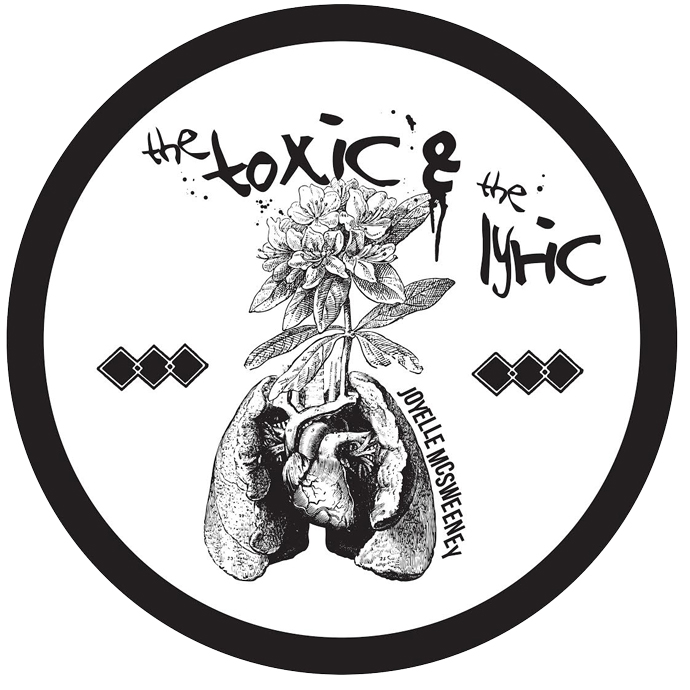The Toxic and the Lyric I: On Losing My Hearing; The Infernal; The Sublime and the Virtual; Tuberculosis bacilli
31.08.17

(What follows is the first of a Medusine, multi-tendrilled series on poetry which will cover such topics as: the toxic and the lyric; the political and the infernal; hearing and Hell; damaged bodies and speaking plants; the virtual and the botanical; ornament and parasites; etc. Canonicals and contemporaries will be discussed; think of it as a poison garden, a small shady plot in the Necropastoral, full of grafts and oddities, maudits and fleurs du mal. Next up: Hearing and Hell – JMcS)
1. For a long time I’ve been haunted by a question:
Where is Art going and where has it been?
The haunting began about five years ago, when I started to lose my hearing. At first, this question would come into my head when I sat down to write, or lay down to sleep, or at any quiet moment: my head would fill up with the sound of bees—tintinnabulation—but of bees made of wire, and as I concentrated on this sound, it would pull to a filament, and then:
Where is Art going and where has it been?
2. One kind of hearing dropped away, another rose up to fill its place; my blighted auditory canals bristled with roses; I was becoming-medium, what Kim Hyesoon calls Hearing the Abandoned. I could no longer fantasize myself a ‘font’ of art, a creator, an originator, as all my Anglo-American training had tried to authorize me. I am a medium for Art—a medium in both the occult sense and in the technological sense—Art passes through me, becomes formal, communicable, then goes elsewhere, then it’s gone.
Like any poet would say about poetry—
I don’t know what it is, but I know when it’s gone.
3. This unauthorized way of thinking led me to think of Art in infernal and upsidedown ways—that Art comes not from on high but from Hell, is not orderly but counterproductive, that it seeps, that it influences, that it pollutes, contaminates, exhilarates, intoxicates—that it fluctuates, that it swoops from minus to plus and back again, or occupies all these poles at once. A doubleness, a dubious Sublime.
I wrote The Necropastoral under this influence.
4. But lately I’ve been thinking about the intensity of lyric poetry, its hook, its snare, its barb, its whatness, that something else that makes a mere draft an actual poem—I don’t know what it is but I know when it’s gone. That surplus is also, contradictorily enough, essential. An “essential surplus” is a contradiction in terms, a paradox—and another definition of the Sublime. The Sublime activates both sides of any binary. The double activation of a binary produces an irrational (non-Cartesian) bolt of energy that is infernal, political. Another name for this bolt of energy is Art, or, the Virtual.
5. I had to test this idea against that apogee (and effigy) of the Western lyric, Keats’s “Bright Star”
Bright star, would I were stedfast as thou art— Not in lone splendour hung aloft the night And watching, with eternal lids apart, Like nature's patient, sleepless Eremite, The moving waters at their priestlike task Of pure ablution round earth's human shores, Or gazing on the new soft-fallen mask Of snow upon the mountains and the moors— No—yet still stedfast, still unchangeable, Pillow'd upon my fair love's ripening breast, To feel for ever its soft fall and swell, Awake for ever in a sweet unrest, Still, still to hear her tender-taken breath, And so live ever—or else swoon to death.
6. We can read the last line of “Bright Star” as a riddle. Syntactically, it appears to set up alternatives which must be chosen between—live or die? Yet the em-dash really communicates, to me, a state of bothness: The speaker will both “live ever” and “swoon to death”. This is the thrill, the intensity, the charge of the final line—and to those susceptible to its drug, it is indeed swoon-inducing. What we really have in the last line is an impossible and/or, the Sublime, a lyric intensity, the virtual. One answer to this riddle is lyric itself. Lyric is unnatural, an infernal, Sublime escape pod from normal mortality, allowing the voice to live on, issuing ever in an undead state—“And so live ever”, swooned to death.
7. But there is a second answer to this riddle, much less abstract: the tuberculin bacillus. Mycobacteria tuberculosis. It is this bacterium that killed Keats. It is this bacterium, autumnally ripening in the breast, that actually answers the call of this riddle—fulfilling both conditions of the final line and enabling Keats both to live forever and to swoon to death. Infernal and/or. The Sublime, the lyric, and the toxin all become bio-identical here, supercharging a would-be binary. And/or they become thanato-identical—identical in the paradoxically foreclosed and horizonless space of death.
8. The Toxic and the Lyric. The Toxic names the intensity of the Lyric. The Toxic names the posthumous potential of the Lyric. The Toxic names the Sublime potential of the lyric.”The Toxic and the Lyric” forms a Sublime binary, with both sides paradoxically activated. “The Toxic and the Lyric” is an infernal and/or. The Toxic and the Lyric is an infernal Engine. It is the Engine of Lyric Intensity.
———————
Image header by Andrew Shuta.